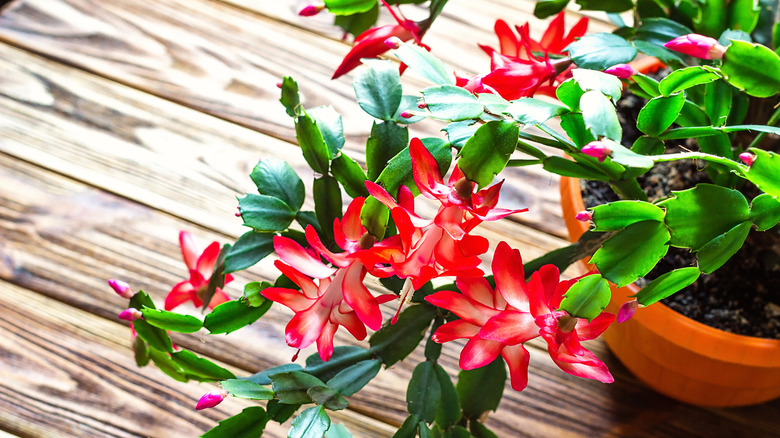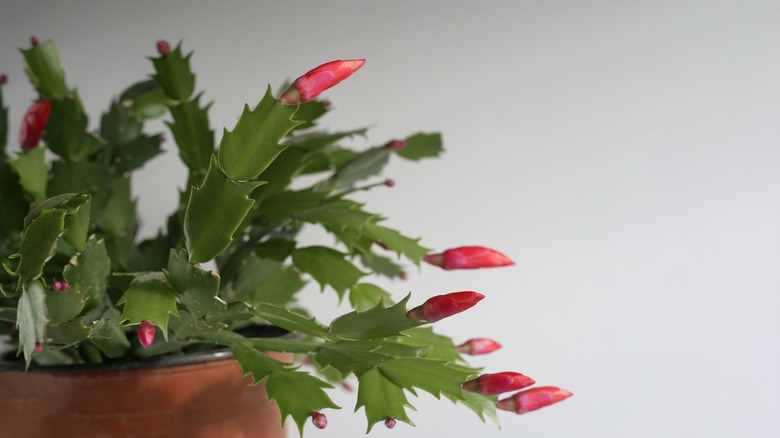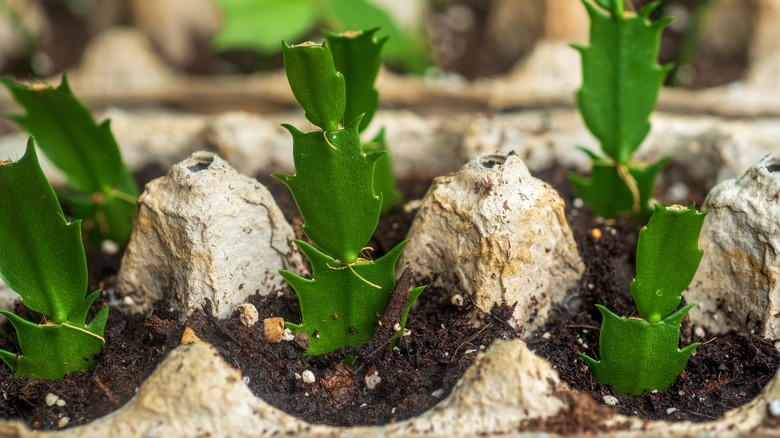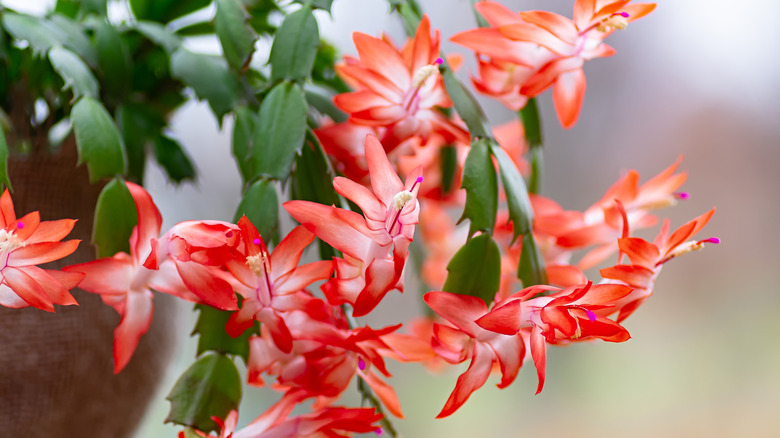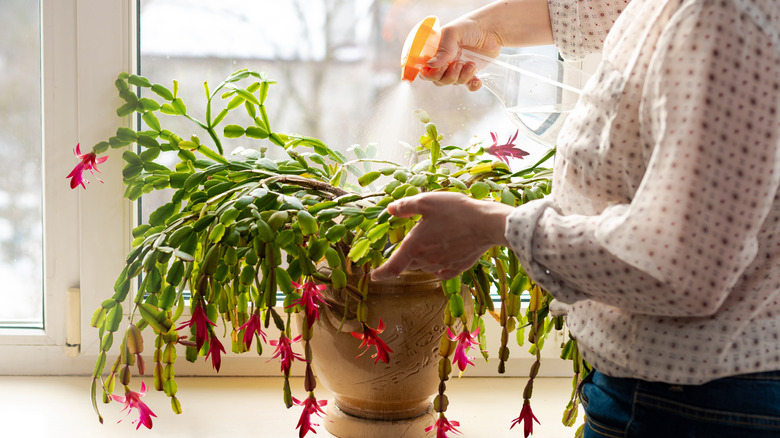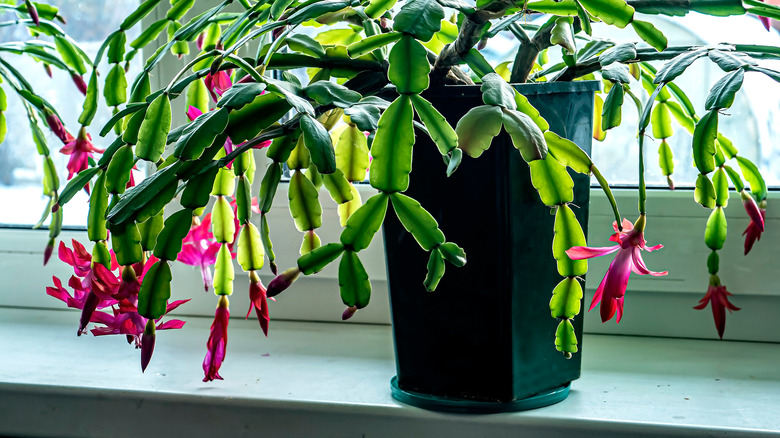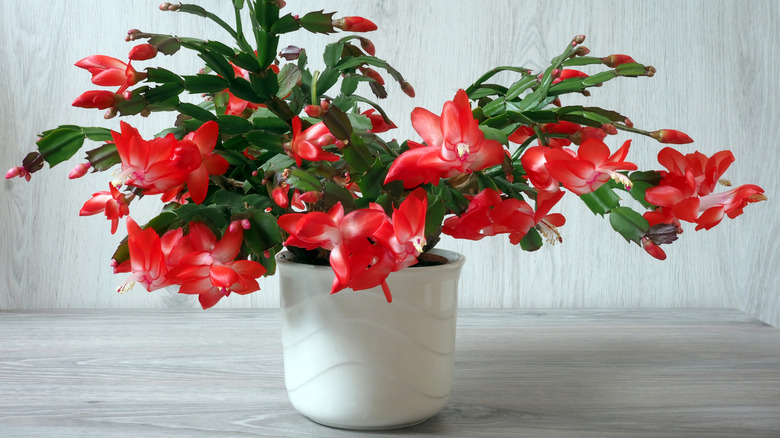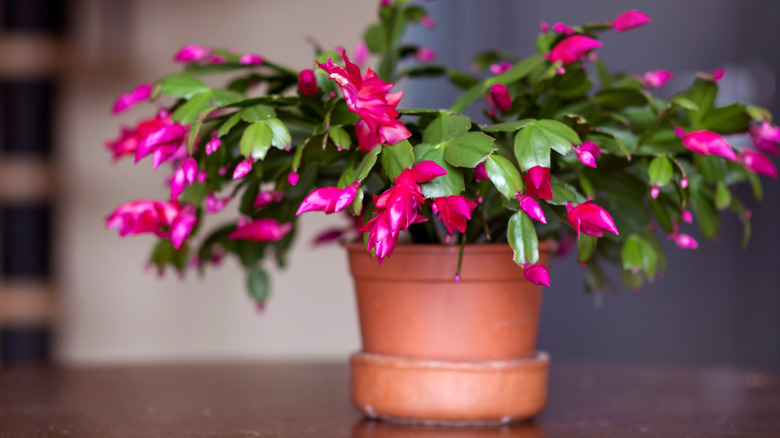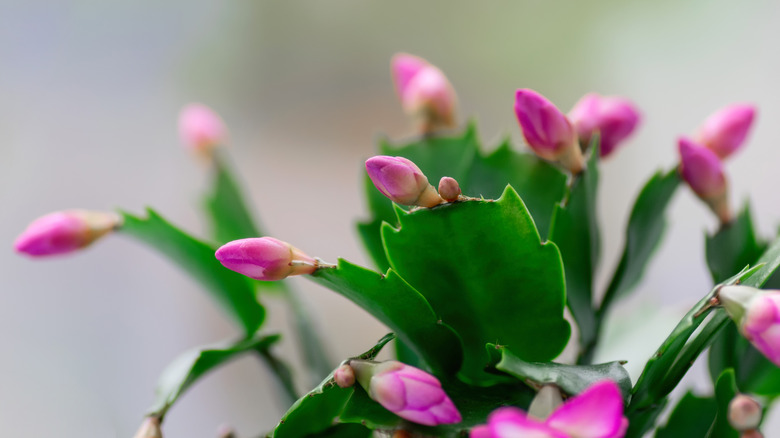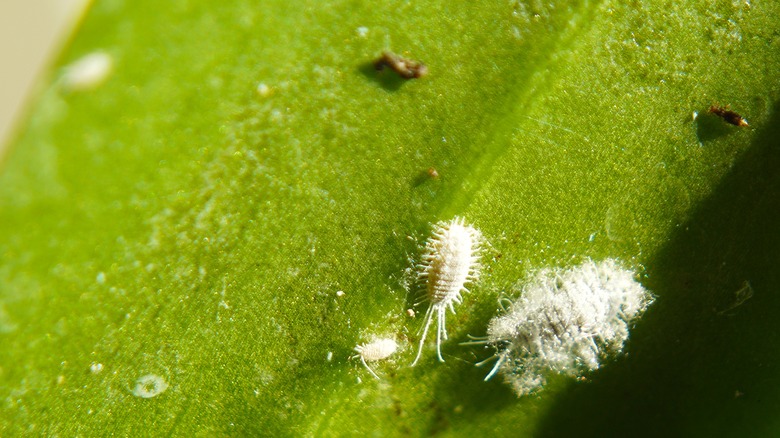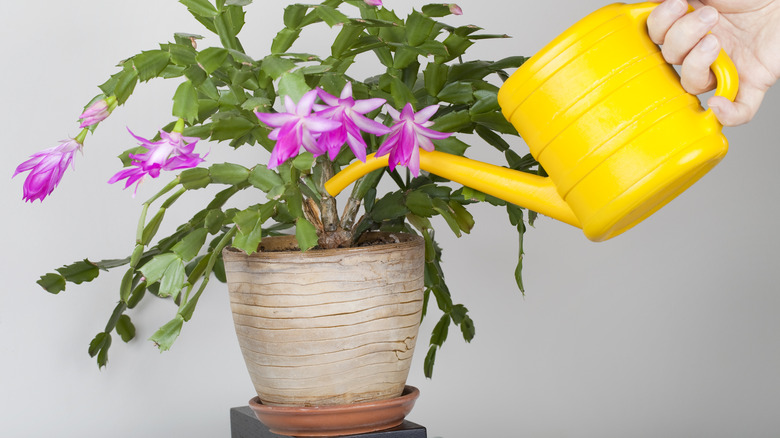Christmas Cactus: How To Care For The Houseplant
The Christmas cactus (Schlumbergera bridgessii) belongs to a unique tropical family that also includes the Easter and Thanksgiving cacti. This plant dwells among the ranks of Norfolk Island pine trees and poinsettias as famous winter flora. The most popular type in this genus, the Christmas cactus, is a hybrid plant, blooming in the late fall or early winter and growing reasonably quickly, reaching 2 feet in around 2 years.
All varieties of Christmas cactus are tropical in origin and can be kept indoors at any time of year as a houseplant until the late spring or summer when they can be replanted or moved outside. Your cactus will bloom at the start of winter — even in late November — if given proper care and can live for decades. And while the name may be somewhat intimidating, the Christmas cactus is a simple-to-grow, all-year plant. In fact, this lovely winter-flowering houseplant would be a wonderful addition to any home, so if you want to amaze your guests with a stunning flowering plant, this is it.
How did the Christmas cactus get its name?
When you think of Christmas, you probably don't envision brightly colored flowers and tropical foliage. Yet, this distinctive variety has been a favorite holiday gift for hundreds of years, dating back to the 19th century. Like many other types of plants, cacti tend to flower in late spring, while the Christmas cactus blooms in cooler months. Due to this, the Schlumbergera got the festive title we recognize today.
However, despite the name, this iconic plant is actually considered a succulent. Cacti usually have needle-like spines, lack leaves, and store water in their stems. Conversely, succulents keep water in their fleshy leaves, stems, or roots to use during dry periods. Both of these plants, however, are typically from arid regions like Mexico and South America. So, whatever you want to call it, this tropical holiday plant, originally native to Brazil, is truly one-of-a-kind.
Where to buy a Christmas cactus
Although Christmas cactuses are popular gifts in retail stores during the holiday season, you can purchase them year-round. One great place to find this tropical succulent is your local nursery. But, if you don't have a plant shop nearby, you can purchase many varieties online. Typically, this houseplant costs around $25, though it may be more or less, depending on the size, time of year, and place of purchase.
Because Christmas cactuses are easy to propagate, you can usually find cuttings online in places like the Facebook marketplace, depending on where you live. If you know someone who owns the holiday plant, they may be willing to cut off a piece for you. Start by twisting or pinching off a section of 1 to 4 leaf segments at a time. Then, you can either propagate by placing it directly into moist cactus soil or submerging the bottom inch in water. Once it starts growing roots, you can transfer it into the soil and enjoy growing your baby Christmas cactus.
How to grow the Christmas cactus plant
This festive cactus is a little picky when it comes to temperature, so it's best to plant it in a container or hanging basket if you live in a cool location so you can bring it inside when the weather drops below 50 degrees Fahrenheit. As mentioned, the Christmas cactus requires a lot of humidity, especially if it's being cultivated in the dry conditions of a heated house in the winter. Spray the plant regularly or lay a pebble tray filled with water beneath the pot to increase humidity.
The Christmas cactus enjoys warm temperatures between 70 and 80 degrees Fahrenheit during its prime growing months; April to September. However, once the buds are set, the plant needs low nighttime temperatures — between 55 and 65 degrees Fahrenheit — and a minimum of 13 hours of darkness to produce buds and flowers. This plant dislikes sudden drafts and will drop its buds or blossoms if exposed to them, so make sure to keep it away from frequently opened doors and drafty windows. When growing the Christmas cactus, use a potting media that drains effectively, such as a mix of potting soil, perlite, and orchid bark. In warmer climes, light shade or early morning sun is preferable for growing Christmas cactus outside, but a sunnier setting is better in the fall and winter. However, beware of direct, intense sunlight — it might bleach the plant's leaves.
How to care for the Christmas cactus
When caring for Christmas cactus, you'll need to water the plant when the soil is dry — but not bone dry. The plant should also not be overwatered, especially in the winter, as it can cause it to rot. Give it a good dousing every week or two, and make sure to allow the soil time to completely dry out in between. It's also important to eliminate excess water, so well-draining soil and a pot with drainage holes are must-haves
Early in the summer, trim the Christmas cactus by removing two or three segments. Trimming your plant regularly will encourage full, bushy growth. Feed your holiday cactus with a half-strength and diluted water-soluble stabilized fertilizer once a month during the early spring and summer months. However, you should stop feeding once you see flower buds forming, which generally happens in late summer or early fall. You can restart monthly feedings after the plant blooms.
Christmas cactus varieties
There are two more plants known as holiday cacti besides the Schlumbergera bridgessii or the Christmas cactus. They all have similar appearances, although the shape of their leaves differs slightly. Unfortunately, they are also frequently mislabeled in garden centers.
The Thanksgiving Cactus (Schlumbergera truncata) has showy flowers that bloom late in the fall, around Thanksgiving, hence its name. The edges of its leaves have highly sharp and claw-shaped projections. Then, there's the Easter Cactus (Rhipsalidopsis gaetneri), an early-blooming cultivar. It has small bristles on the edges of its rounded leaf segments and starts revealing star-shaped flower buds in February and flowers from March to May.
The Christmas cactus variety includes a few other types that boast different colors. The Kris-Kringle has the most vibrant red blossoms, but it blooms early and may not persist till the holidays. Thor Britt features white blooms with a hint of pink in the center of the petals and pink stamens. This type is an upright variety rather than a trailing plant variety. Or, you can go with Peach Parfait, with orange, peachy-colored flowers with purple stamens appearing later in the season.
Is Christmas cactus toxic?
While characterized as a non-toxic plant, some people may have adverse reactions from handling it, Garden Plants explains. For example, it can induce urticaria — swollen, pale red pimples, with symptoms such as sneezing and eye itching. In some cases, they induced swollen eyes and asthmatic dyspnea — or chest tightness — when handled. Regular contact with the Christmas cactus can also cause rhinoconjunctivitis in humans. Without having a cold or flu, the case can exhibit symptoms such as sneezing and a runny or blocked nose.
Christmas cactus can also be harmful to dogs and cats, and it can cause gastric irritation when ingested. It can produce nausea, vomiting, diarrhea, depression, and anorexia after intake. In addition, this herb causes ataxia — a type of brain injury — in cats when consumed. However, these symptoms are modest and only last till the animal digests the food, although it is risky for elderly animals.
How to repot Christmas cactus
The Christmas cactus should be repotted every 1 to 2 years in the spring or early summer to maintain humidity. Likewise, pruning the Christmas cactus after it has bloomed is an excellent way to get the best shape and increase flowering uniformity. Make sure to transfer the root with care and without disturbing it during the repotting process. Repotting a Christmas cactus can be challenging, so take your time.
Look for a commercial bromeliad or succulent potting mixture that is lightweight and well-drained. Alternatively, you can use a combination of 1/3 ordinary potting soil and 1/3 sand. Repot the Christmas cactus into a pot that is only slightly larger than the current container, and make sure the container's bed has a drainage hole. Although the Christmas cactus enjoys wetness, it will quickly decay if the roots are not given enough oxygen.
Remove the plant and the surrounding soil ball from its pot and gently separate the roots. If the potting mix is compacted, use a little water to gently wash it away from the roots. In the new container, replant the Christmas cactus so that the top of the root ball is about 1 inch below the rim. Use the fresh potting mix to fill in around the roots, and remove any possible air pockets by lightly patting the soil. Water it sparingly. Place the plant in a shady spot for two or three days before starting its regular care routine.
How to make your Christmas cactus bloom again
Christmas cactus plants bloom either in the fall when the weather is chilly and the days are short or in the winter during the holiday season. However, you can make your plant get flowers in both these seasons for a magnificent holiday view. To make your plant bloom again, begin the process 8 to 10 weeks before Christmas. Once your plant is established, it should flower in 4 to 6 weeks.
Place the Christmas cactus plant in a room with nighttime temperatures of 50 to 55 degrees Fahrenheit and allow it at least 13 hours of continuous darkness each night for the greatest results. During the day, provide it with bright, indirect light. It's ideal to have a cool basement with windows or an extra room that isn't used at night. However, you can still obtain blooms if you don't have a cool area in your house: Simply give it at least 15 hours of absolute darkness each night. Finally, cover the plant with a large box or move it in and out of a closet until the colorful flower buds bloom. As soon as buds start to form at the tip of the branches, move the Christmas cactus to its holiday spot and enjoy the display.
Common Christmas cactus pests
Despite the festive plant's low-maintenance qualities, they aren't immune to problems. The most common pests that affect Schlumberger are mealybugs, aphids, and spider mites. If your plant seems to stop growing or begins to look unhealthy, there may be an infestation. Mealybugs are small, white, and fluffy spots that appear on the foliage. Aphids are pear-shaped and are typically pale green, though they may be shades of brown, yellow, pink, or black. Lastly, spider mites are so tiny you may need a magnifying glass to see them. Most people notice the fine webbing they weave between leaves.
If you suspect pests, you can treat your houseplant in a few ways. Neem oil is a popular remedy for killing soft-bodied types like those mentioned above. Begin with the top of the cactus and work your way to the bottom, ensuring you cover all the leaves and flowers thoroughly. If there are pests after a few days, give it another good soaking. You can also use an alcohol-soaked cotton ball to kill and remove any insects you see. Be sure to quarantine your infected plant during treatment so they can't target other plants. Sometimes, it's better to dispose of the Christmas cactus if there is a large infestation.
Christmas cactus diseases to look out for
Diseases that can affect the Christmas cactus include stem rot, root rot, Botrytis blight, and impatiens necrotic spot virus. Root rot is one of the big issues plants like these face because they're easy to overwater. If your houseplant looks unhealthy, check the roots for dark mushy areas. Remove any affected roots and repot in fresh new soil. If the roots look healthy, it could be due to another infection like Botyris blight, a type of fungal disease.
Unfortunately, fungal diseases affect plants similarly, so it can be challenging to narrow it down. Fungicides can help, but you must know which pathogen to target to choose the right product. Botrytis blight, or grey mold, is a silver covering typically found on the flowers. Impatiens necrotic spot virus (INSV) causes foliage to become yellow, spotted, or appear wilted. Thrips are typically the culprit for transmitting this disease, so keep up with products like neem oil to remove them. Relocate your cactus to a location with more airflow and less humidity to prevent future outbreaks, and remove any infected blooms or leaves to prevent spread.
If the Schlumbergera begins to turn black, your options to save it are limited. The best course of action is to quarantine it, remove any unhealthy leaves or flowers, and repot it in clean soil. Sometimes, if you catch the disease early, your Christmas cactus may be able to recover.
